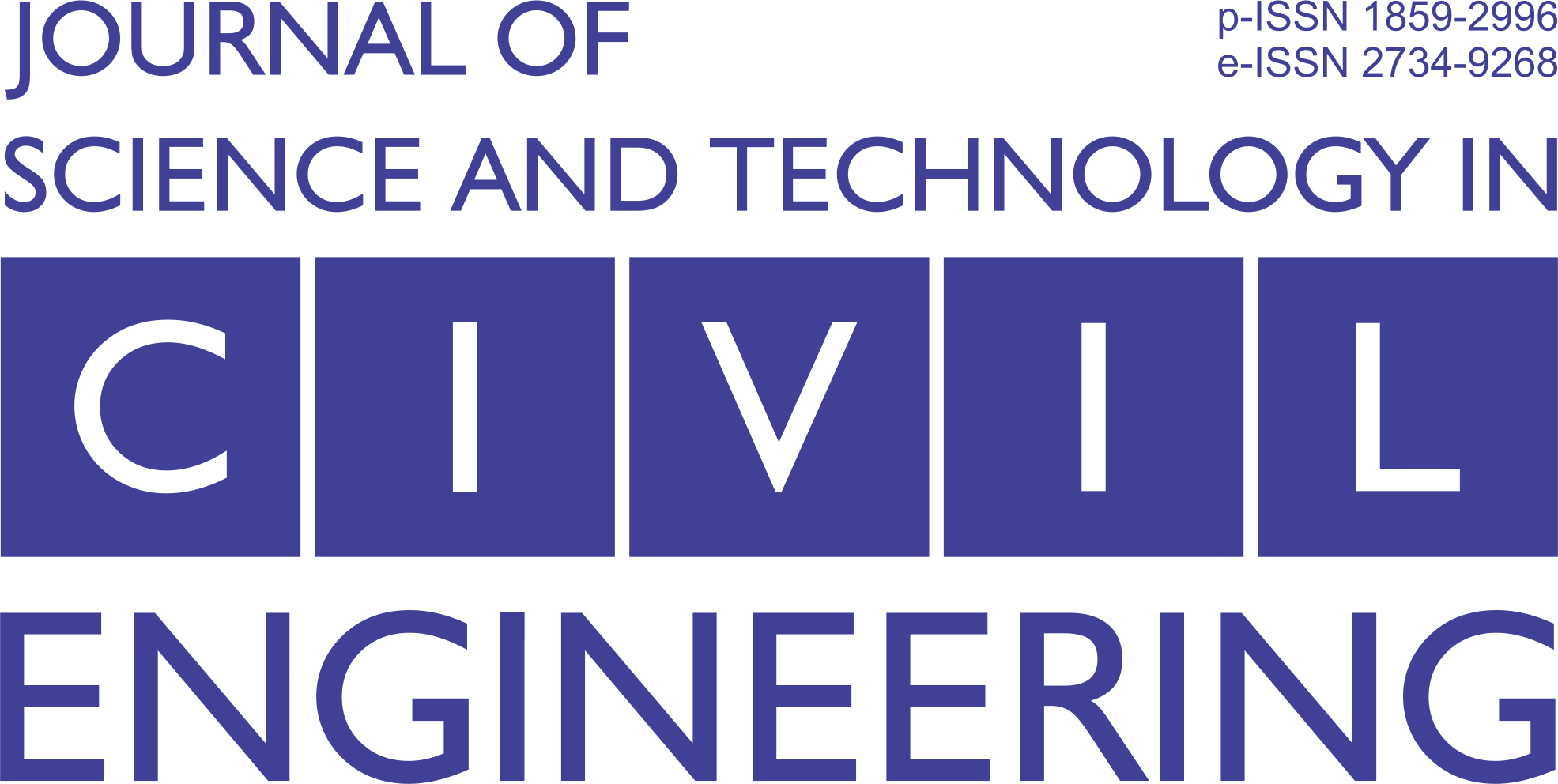Đánh giá thực nghiệm và mô phỏng độ thấm khí của đá xi măng có tính đến ảnh hưởng của độ bão hòa nước
Tóm tắt
Độ thấm khí của một vật liệu có lỗ rỗng là một đại lượng đặc trưng cho khả năng cho phép chất khí đi xuyên qua mà không làm thay đổi cấu trúc của chất đó. Tính thấm của vật liệu phụ thuộc vào nhiều thông số như độ rỗng, áp suất khí thẩm thấu, hình dạng, độ nhám và tính kết nối giữa các lỗ rỗng. Đối với trường hợp của đá xi măng, trong cấu trúc lỗ rỗng luôn tồn tại hai pha lỏng và khí. Sự tồn tại của nước tự do trong hệ thống lỗ rỗng có ảnh hưởng không nhỏ đến khả năng truyền dẫn và hấp thụ khí của vật liệu.
Mô hình thực nghiệm giới thiệu trong bài báo đã được phát triển và ứng dụng tại phòng thí nghiệm về Xây dựng và Cơ học (Laboratoire en Génie Civil et Génie Mécanique) thuộc trường Trung ương thành phố Nantes (Ecole Centrale de Nantes), Cộng hòa Pháp. Trên cơ sở phân tích kết quả đo độ thấm khí thu được trên các mẫu hình trụ, dựa trên các lý thuyết mô phỏng đã được xây dựng và thiết lập, nghiên cứu cho phép chỉ ra những thông số cần thiết tương ứng với từng loại vật liệu xem xét.
Từ khoá: định luật Darcy; độ thấm nội tại; hệ số thấm thủy lực; độ thấm khí; hiệu ứng Klinkenberg.
Tải xuống
Tài liệu tham khảo
Darcy, H. (1856). Les fontaines publiques de la ville de dijon. Victor Dalmont, Paris.
Picandet, V. (2001). Influence d’un endomagement mécanique sur la perméabilité et sur la diffusivité hydrique des bétons. These de Doctorat.
Klinkenberg, L. G. (1941). The permeability of porous media to liquids and gases. Drill. Prod. Pract. API 200–213.
Kollek, J. J. (1989). The determination of the permeability of concrete to oxygen by the Cembureau method-a recommendation. Materials and Structures, 22(3):225-230. https://doi.org/10.1007/bf02472192
Cassanas, M. N. (2005). Etude expérimentale d’injection de coulis de ciment dans un milieu granulaire. Perméabilité au gaz. Rapport de stage, Institut de Recherche en Génie Civil et Mécanique (GéM), Ecole centrale de Nantes.
Bouasker, M. (2007-2008). Etude de propagation de coulis dans des sols injectés, mesure de perméabilité. Mémoire de DEA Génie Civil (Eau, environnement et génie côtier), Institut de Recherche en Génie Civil et Mécanique (GéM), Ecole centrale de Nantes.
Lion, M., Skoczylas, F., Lafhaj, Z., Sersar, M. (2005). Experimental study on a mortar. Temperature effects on porosity and permeability. Residual properties or direct measurements under temperature. Cement and Concrete Research, 35(10):1937-1942. https://doi.org/10.1016/j.cemconres.2005.02.006
Burdine, N. T. (1953). Relative permeability calculations from pore size distribution data. Journal of Petroleum Technology, 5(3):71-78. https://doi.org/10.2118/225-g
Mualem, Y. (1976). A new model for predicting the hydraulic conductivity of unsaturated porous media. Water Resources Research, 12(3):513-522. https://doi.org/10.1029/wr012i003p00513
Corey, A. T. (1994). Mechanics of immiscible fluids in porous media. Water Resources Publication.
Brooks, R. H., Corey, A. T. (1964). Hydraulic properties of porous media. Hydrol. Pap. 3, Colo. State Univ., Fort Collins.
Van Genuchten, M. T. (1980). A closed-form equation for predicting the hydraulic conductivity of unsaturated soils 1. Soil Science Society of America Journal, 44(5):892-898.
Kewen, L. (2004). Theoretical development of the Brooks-Corey capillary pressure model from fractal modeling of porous media. Fourteenth Symposium on Improved Oil Recovery held in Tulsa, Oklahoma, U.S.A.
Verdier, J., Carcasses, M., Ollivier, J. P. (2002). Modelling of a gas flow measurement: Application to nuclear containment vessels. Cement and Concrete Research, 32(8):1331-1340.
1. Tác giả chuyển giao toàn bộ bản quyền bài báo cho Tạp chí Khoa học Công nghệ Xây dựng (TCKHCNXD) – Trường Đại học Xây dựng Hà Nội (ĐHXDHN), bao gồm quyền xuất bản, tái bản, truyền tải, bán và phân phối toàn bộ hoặc một phần bài báo trong các ấn bản điện tử và in của Tạp chí, trong tất cả các phương tiện truyền thông được biết đến hoặc phát triển sau này.
2. Bằng cách chuyển giao bản quyền này cho TCKHCNXD, việc sao chép, đăng, truyền tải, phân phối hoặc sử dụng toàn bộ hoặc một phần bài báo bằng bất kỳ phương tiện nào bởi Tác giả đều yêu cầu phải trích dẫn đến Tạp chí một cách phù hợp về hình thức và nội dung, bao gồm: tiêu đề của bài báo, tên các tác giả, tên tạp chí, tập, số, năm, chủ sở hữu bản quyền theo quy định của Tạp chí, số DOI. Khuyến khích đưa kèm đường dẫn (Link) của bài báo đăng trên trang web của Tạp chí.
3. Tác giả và công ty/cơ quan chủ quản đồng ý rằng tất cả các bản sao của bài báo cuối cùng được xuất bản hoặc bất kỳ phần nào được phân phối hoặc đăng bởi họ ở dạng in hoặc điện tử như cho phép ở đây sẽ bao gồm thông báo về bản quyền theo quy định trong Tạp chí và trích dẫn đầy đủ đến Tạp chí như được công bố trên trang web.







